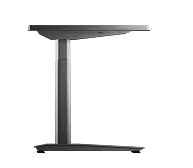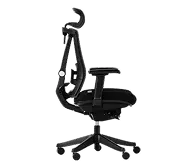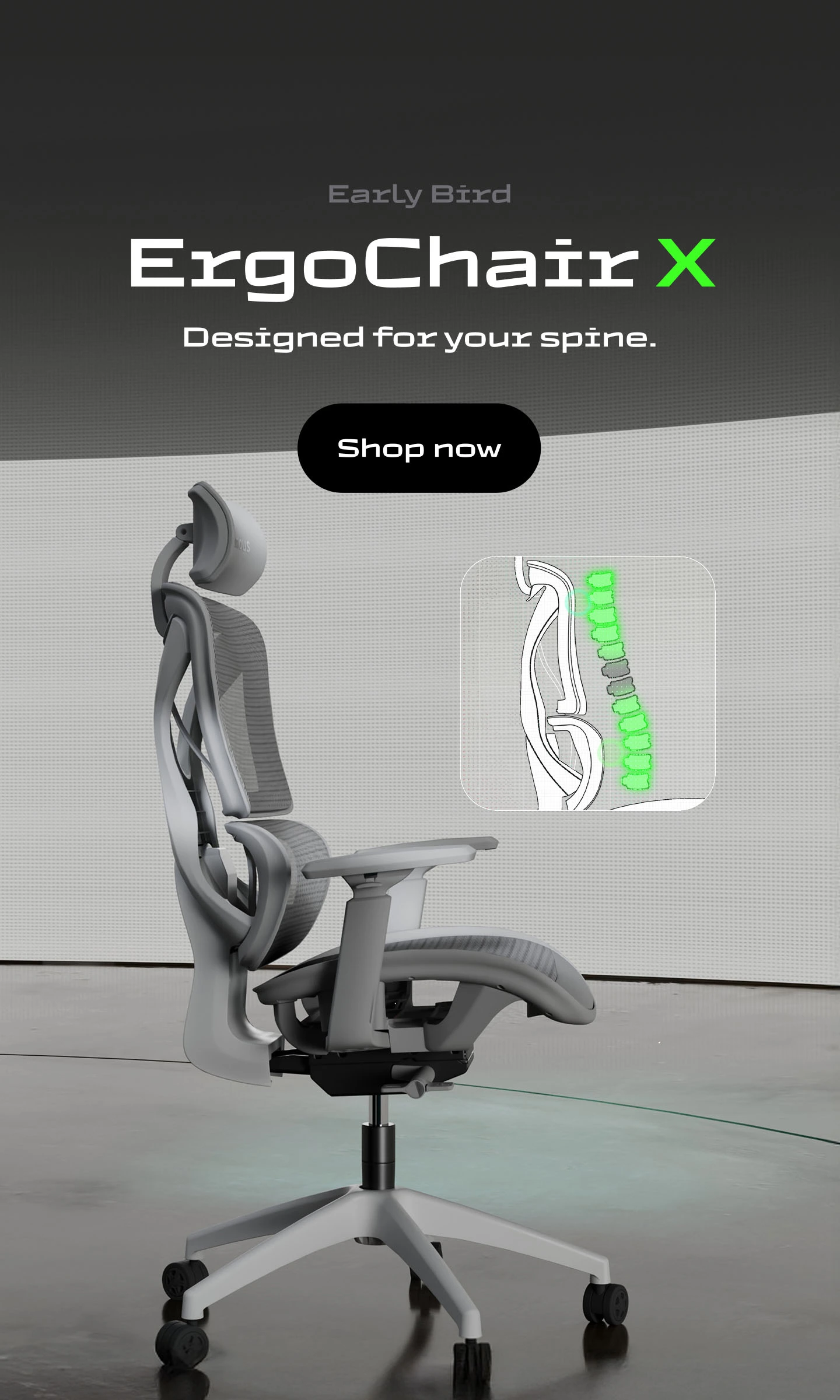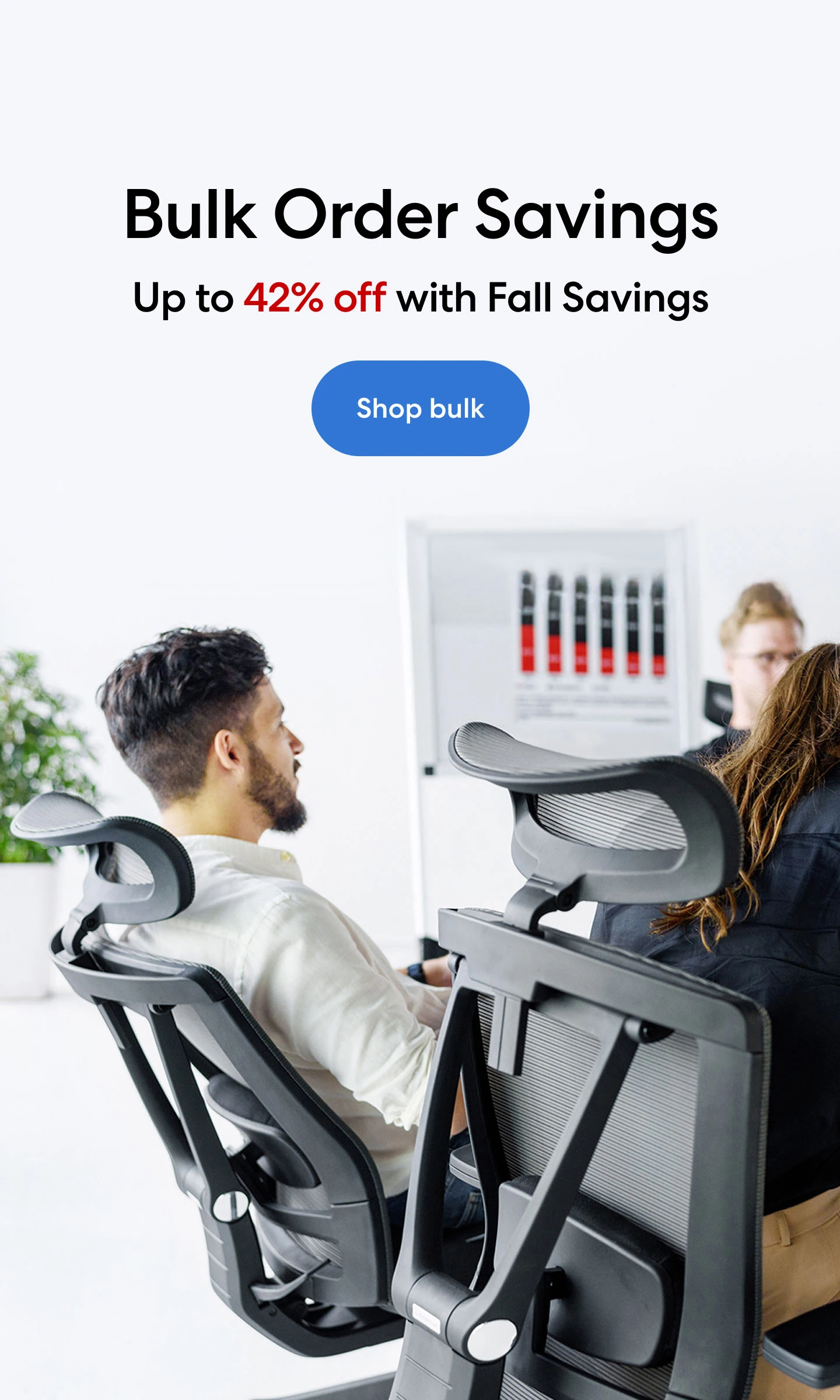
Table of Contents
Let’s face it – in a world raging on the work-from-home routine, everyone has faced problems with their lower back.
Working at a daylong desk job, no matter how comfortable the chair is, almost mandatorily comes with some back problems. A sedentary lifestyle can flare up some serious issues for people with a long-standing lower back pain problem.
The best way to deal with this situation is to learn how to sit with lower back pain. So, here is a guide to eight of the best practices for sitting with lower back pain.
The Worst Sitting Positions For Lower Back Pain
A lot of people ask about how to sit with lower back pain. It is no secret that sitting for prolonged periods in improper positions can exacerbate lower back pain and lead to discomfort and potential back issues. Here are five of the worst sitting positions for lower back pain, along with descriptions of each:
1. Slouching or "C-Shaped" Sitting
This sitting position involves rounding the lower back and shoulders forward, resembling a C-shape. Slouching places excessive stress on the intervertebral discs and soft tissues of the lower back, straining the lumbar region. It weakens the spine's supportive muscles and can lead to chronic lower back pain over time.
2. Cross-Legged Sitting
Sitting with crossed legs might feel comfortable initially, but it can cause an imbalance in the hips and pelvis, leading to spine misalignment. The lower back often bears more weight in this position, which can strain the muscles and potentially lead to nerve compression. Prolonged cross-legged sitting can exacerbate existing lower back pain or create new discomfort.
3. Forward Head Posture
In this position, the head juts forward, and the shoulders round, creating an unnatural alignment for the spine. Forward head posture places excessive strain on the neck and upper back, which can then affect the lower back. The lower back muscles may have to compensate for the poor upper body posture, leading to increased tension and discomfort.
4. Perching on the Edge of the Chair
Sitting on the edge of a chair with the feet lifted or not resting flat on the floor can lead to an unsupported lower back. This position puts additional pressure on the lumbar region, leading to stress on the spinal discs and soft tissues. Without proper support, the muscles around the lower back have to work harder, potentially leading to pain and fatigue.
5. Sitting with Legs Straight and Unsupported
Sitting with the legs extended straight and without any support for the feet can cause the pelvis to tilt backward, leading to an increased arch in the lower back (hyperlordosis). This excessive curvature can strain the lumbar spine, leading to discomfort and increased pressure on the discs and joints.
How to Sit with Lower Back Pain
1. Reclined Sitting
You can tackle the pain in your lower back with a reclined sitting position. In this position, you lean at an angle of 100-110 degrees and take full advantage of the backrest. By leaning towards the back, you will cut down on the fatigue experienced in your lower back.
As one of the best ways to sit for lower back pain, this position requires relatively lesser muscle activity. You can buy an office chair lumbar support if you sit in this position occasionally.
You can find many recliner chairs specially designed to serve this purpose. Some of the key factors to help you pick the best recliner chair are:
- Ergonomic design to help in spinal alignment
- Excellent lumbar support to comfort your back
- Adjustments available for backrest and armrest
- Cushioned seating to take care of your back
2. Support Your Back at a Ninety Degree Angle
One of the golden rules for sitting with lower back pain is to avoid slouching at all costs. Your back undergoes a tremendous amount of pressure when you slouch all day in a chair.
The best way to sit for lower back pain and get rid of your slouching habit is to stick to a ninety-degree angle. You should adjust the settings for your chair to support both your lower and upper back in a ninety-degree position.
If you are looking to change your chair altogether, then here are our top picks for office chair lower back pain.
3. Supine sitting
Another great sitting position for lower back pain is the supine sitting arrangement. The supine workstation is built to keep your body completely leaned and relaxed with minimal muscle activity. Here, your body lies almost flat on a chair.
You can get a supine computing chair to take the benefit of lying horizontally and working effortlessly.
However, you must note that given the care and design required to build a supine chair, it does not come cheap. So, you can look for an ergonomic chair to support your back while working.
4. Find the Best Position for Your Chair
Besides your posture, the way you position your chair also holds a significant impact on your back. While it may not be easy to find the best sitting position for lower back pain, it is definitely not impossible.
Here are a few steps you can take to position your chair perfectly:
- Adjust the chair’s height to match your eyes’ level with the screen
- Keep the distance between chair and table such that you can place your elbows on the desk.
- Place your feet flat on the floor and position your knee at ninety degrees for optimum blood flow.
- Adjust your armrests in a way that they lift your shoulders.
- Keep your elbows on the desk no wider than 100-110 degrees.
- Keep all objects within arm's reach so that you do not need to stretch your back frequently.
To find out more about some proven sitting positions for lower back pain, read our guide on ergonomic sitting posture.
5. Practice Some Exercises In-Between Work
A sedentary lifestyle means you are always susceptible to pain in your back. Here are some of the best exercises for you to learn how to sit with lower back pain.
Straight Line
To perform this activity, stand up straight and try to stretch upwards. You have to push as much as possible without tiptoeing.
Shoulder Squeeze
For this exercise, you need to sit straight on your chair and rest your hands over the thighs. Keep your shoulders loose and draw them back in slow motion. Squeeze them together on your back and hold for 5 seconds.
Stretching Upper Torso
You can stand next to a wall and raise your arms. Taking one foot forward, bend on your knee and lean your body ahead. This exercise will help in unwinding the stress in your back and chest.
Tips to Alleviate Back Pain While Sitting
Now that you have learned how to sit with lower back pain, it will be helpful to know some quick tips to take care of your back.
If you are here, then you are most definitely seeking some aid for your backache problem. So, here are some suggestions to help you improve the situation in your back and work without worries.
Do Not Bend Repetitively
One of the most common culprits behind recurring back pain is the habit of bending or slouching. When you turn forward, you are putting pressure on your discs. This ultimately leads to pain in the spinal cord.
Do Not Rely Heavily on Heat and Ice
Heat and ice treatments are very popular among individuals with constant back pain. But these are simply temporary solutions that bring momentary relief. Instead of going for the hot pack every time your back hurts, you can spend some conscious efforts to improve your posture.
Do Not Hesitate to Spend on a Good Chair
If you are working from home and have the opportunity to buy yourself a good chair, then invest in a great one. A great chair with a backrest, lumbar support, and adjustments can quite literally change the entire ergonomics of how you sit.
Alternate Between Different Neutral Sitting Positions
Alternating between different neutral sitting positions can help alleviate the pressure on specific body areas and promote better posture and overall comfort. Let's discuss each of these sitting positions:
1. Reclined Sitting
This is the best sitting position for lower back pain. Reclined sitting involves leaning back slightly, typically at an angle between 100 to 135 degrees, while keeping the feet supported on the floor or a footrest. This position distributes the weight more evenly across the body, reducing pressure on the lower back. It also allows the back muscles to relax and helps maintain the spine's natural curve.
Reclined sitting is particularly useful for people with lower back pain or discomfort as it reduces the load on the lumbar region.
2. Declined Sitting
Declined sitting, also known as forward incline sitting, involves sitting on a slightly declined surface with the hips higher than the knees. This is the best way to sit with lower back pain as this position helps to open up the angle between the thighs and the torso, promoting a more natural curve in the lower back. It can benefit people with tight hip flexors and those who tend to slouch in traditional chairs. However, it's essential to have adequate support for the feet to avoid unnecessary strain.
3. Standing
While standing is not a sitting position, alternating between sitting and standing can benefit overall posture and reduce pressure on the lower back. Standing engages the core muscles and promotes better spine alignment. It allows for more frequent changes in posture and movement, reducing the risk of developing stiffness and discomfort associated with prolonged sitting. Standing desks or adjustable workstations can facilitate this transition between sitting and standing throughout the day.
4. Supine Sitting
Supine sitting involves sitting on the floor with legs extended straight in front of you, creating a 90-degree angle between the torso and legs. This position encourages a natural spine alignment and promotes hip and lower back flexibility. Supine sitting can be beneficial for stretching the hamstrings and lower back muscles. However, individuals with limited flexibility may require a small cushion or support under the buttocks to maintain comfort.
The Right Way to Stand Up from a Sitting Position
Standing up from a sitting position may seem simple, but doing it incorrectly can put unnecessary strain on your body, particularly your back and knees. Proper technique is essential to avoid discomfort and reduce the risk of lower back pain when standing up from sitting position.. Here's how to stand up from a sitting position the right way:
1. Prepare for the Stand
Before standing, shift your weight slightly forward in the chair. Place your feet flat on the floor, hip-width apart. Ensure your back is straight and aligned with the backrest.
2. Engage Your Core
Activate your core muscles by gently pulling your belly button towards your spine. This provides stability and support for your lower back as you transition to standing.
3. Lean Forward
Lean forward slightly from your hips while maintaining a straight back. Place your hands on the armrests or the chair seat to provide additional support.
4. Use Leg Strength
Push through your heels and engage your leg muscles to lift yourself from the chair. Avoid using momentum or pulling with your arms, which can strain your back and shoulders.
5. Stand up Slowly and Smoothly
Rise from the seated position slowly and smoothly, maintaining a controlled movement. Try to distribute your weight evenly between both legs as you stand.
6. Avoid Crossing Your Legs
Avoid crossing your legs or ankles as you stand, as this can compromise your balance and stability.
7. Keep Your Feet Apart
Once you are standing, ensure your feet are hip-width apart. This provides a stable base of support and helps maintain proper alignment.
8. Straighten Your Hips and Knees
Fully extend your hips and knees, but avoid locking them. This helps prevent unnecessary stress on the joints.
9. Use Arm Support, If Necessary
If you have difficulty standing from a low chair or sofa, you can use a staple piece of furniture or handrails for support. However, try to rely on your leg muscles as much as possible.
10. Avoid Twisting
While standing, avoid twisting your body or hips. Instead, pivot your whole body to face the desired direction.
Remember, maintaining good posture and using proper technique when standing up from a sitting position is crucial for preserving the health of your spine and joints. Following these steps can reduce the risk of injury and discomfort, making daily activities more enjoyable and comfortable.
Summing Up
We come to the end of this guide on how to sit with lower back pain. You can begin by improving your posture and finalizing a good posture for sitting. Once you are done with that, invest in a good chair to take care of your back.
After all, sitting should not be a chore that ends up hurting your back. So, sit wisely!
Spread the word

.svg)










